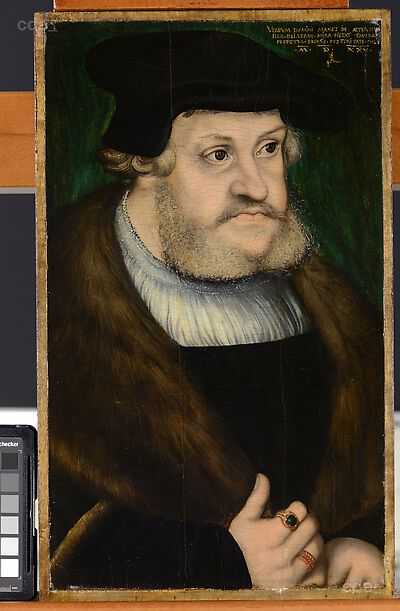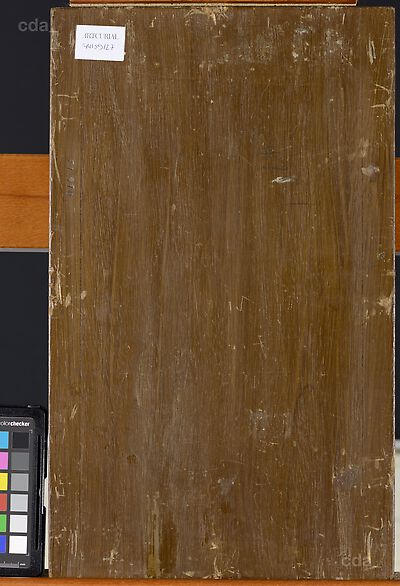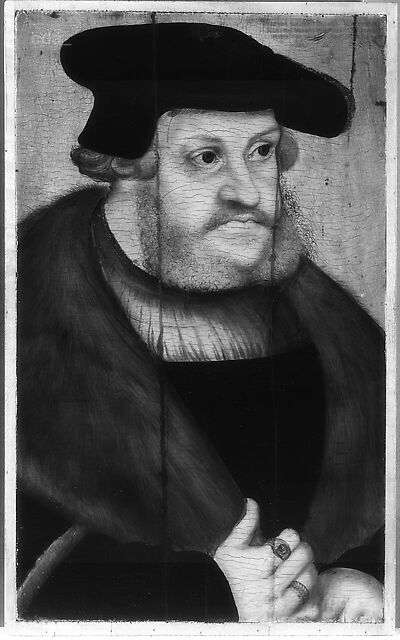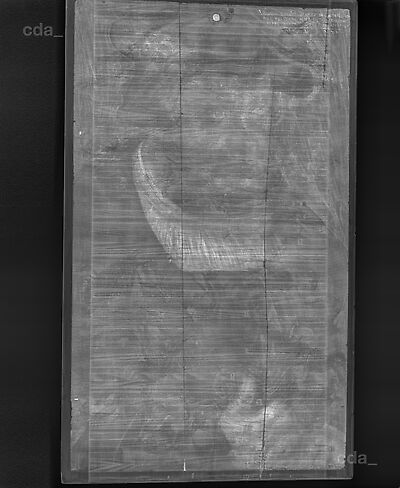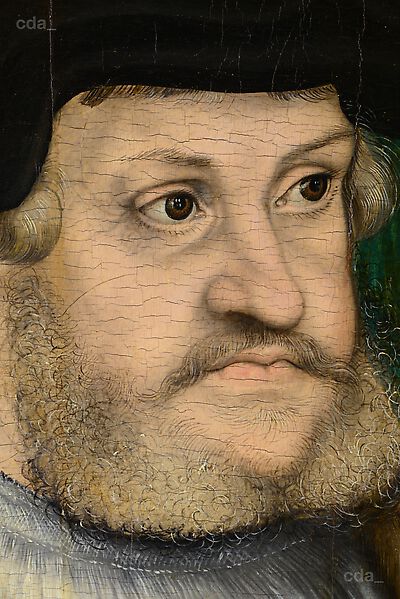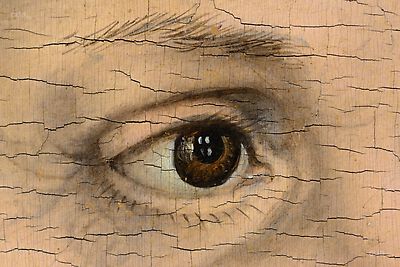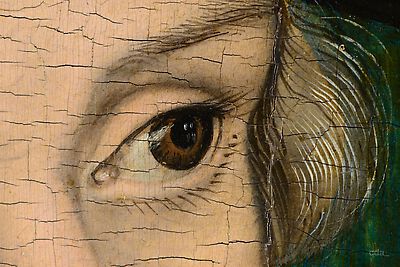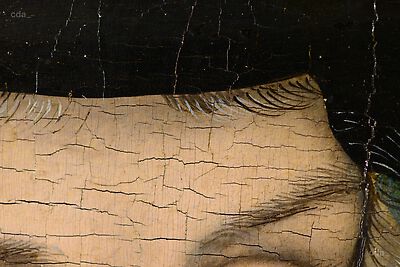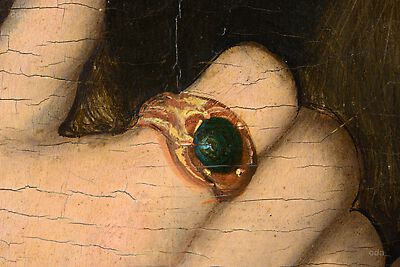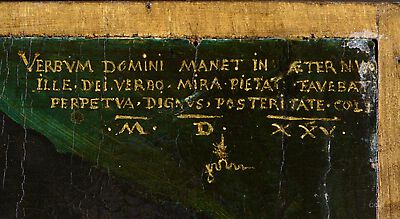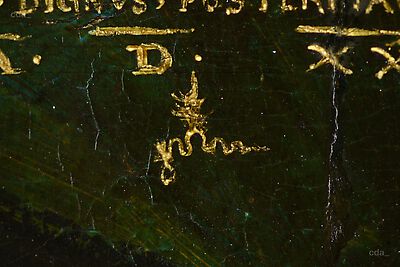Support
The wooden support consists of two vertically alligned and butt joined planks (top from the left: 8.7/14.8 cm; bottom from the left: 9.6/13.9 cm).
The proportions and size of the support correspond with the standard format 'B' employed in the Cranach workshop about 1525. Further portraits of the elector were painted on similarly sized panels.
The reverse of the panel has been thinned and attached to a second wooden panel. The bare wood visible at the edges of the panel is also a later addition and within this context the original format of the painting was slightly altered. Today the panels dimensions are 39.6 x 23.5 cm (without additions).
The extensive restoration treatment carried out on the panel precludes the straightforward identification of the wood species.
The x-radiograph shows that fibres or tow was attached at the top and bottom of the panel before the ground was applied. The fibres and their distributioin over the panel corresponds with findings on numerous other paintings from the Cranach workshop.
Ground and Imprimatura
The panel exhibits a white ground, which appears to be a chalk/glue admixture.
More recent interventions have made it difficult to identify the barbe or edge of the ground.
In the Cranach workshop it was general practice to apply a white chalk ground to the wooden support.
Underdrawing
Only a few lines from the underdrawing are visible in the infrared reflectogram. These were probably executed with a stylus. Single lines are visible in the area of the hands and the light undergarment as well as in the eyes.
Paintings by Cranach and his workshop generally exhibit an economical underdrawing and on numerous works an underdrawing cannot be readily identified. No evidence could be found on this painting to prove that the design was traced.
Paint Layers and Gilding
XRF analysis detected the presence of lead (lead white), tin (lead-tin-yellow), copper (azurite), iron (iron oxide), and calcium (chalk/gypsum?). The blue background contains lead (lead white), copper (azurite) and iron (iron oxide). The inscription and the insignia were painted using lead-tin-yellow.
The modulation of the face was achieved with an initial application of an admixture containing lead white and vermillion pigments. Shadows were added with grey half shadows and semi-transparent brown glazes. The x-radiograph records the effect of the modulation of the face. Details like the eyes and the mouth appeared to have been executed rapidly by an experienced hand.
The beard and hair were initially executed in brown paint of varying intensity and subsequently defined with fine brushstrokes. Single hairs were painted with differing degrees of precision and assurance. In comparison the eyelashes were masterfully executed. The fur was executed by applying paint with a split brush tip over a flat underpaint.
The blue background was executed with great rapidity, employing vertical strokes that are still visible.
The infrared reflectogram confirms that the white shirt was not considered in the initial application: the beard was defined with broad black outlines before the white collar was painted over it. The black paint is still visible to the naked eye in the transition between the beard and the undergarment. So the first version would have been similar to examples in a private collection (FR151, formerly Gotha, 1522) and in Berlin without a white shirt, whereas the final version corresponds with the numerous variants with a white shirt.
In comparison with the version in Darmstadt the face and hands on this painting appear flat. The shirt is less detailed in execution than in the Darmstadt and Schleswig versions. The quality of the execution is similar to the portrait in Berlin.
Framing
The original frame has not survived.
[unpublished examination report, G. Heydenreich, 2017]
- examined by Gunnar Heydenreich

